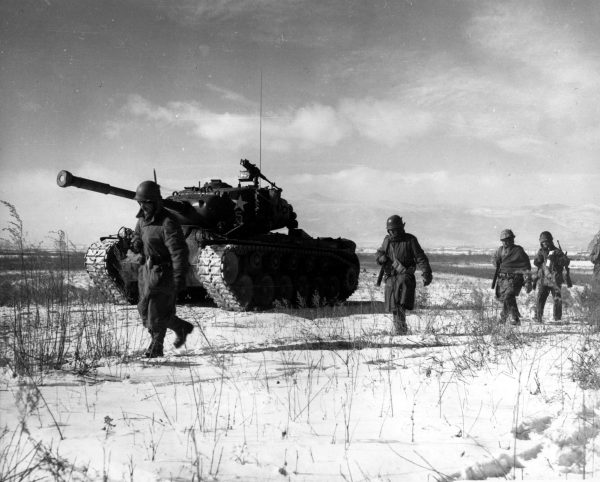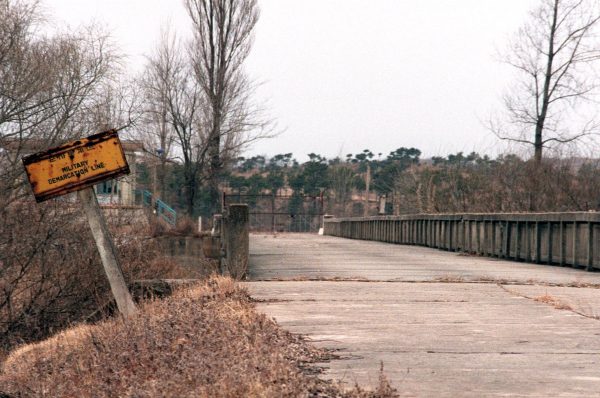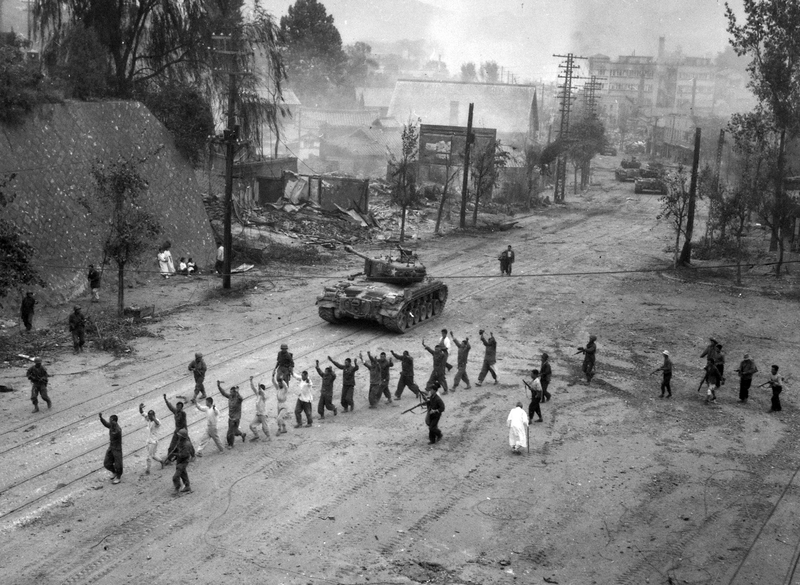For many, the Korean War was overlooked as a sudden eruption of unimaginable violence when the North Korean army poured across the 38th parallel in a surprise attack on June 25th, 1950. To disregard the slow build-up to this horrific event, however, is to miss the lessons that history has for us.
The twentieth century brought a drastic change to the Korean peninsula as dominant nations wrestled with each other for power. In 1910, when Japan colonized Korea, a once sovereign nation was subjugated to oppressive laws that reduced the freedoms of speech, press, and assembly. Nonetheless, Koreans continued to resist by covert and overt means, even sending brigades to fight with the Allies against the Axis powers. Ultimately, the surrender of Japan provided a promising closure to World War II, and instilled a long-yearned hope for the future of the Korean peninsula.
It is said that history is written by the victors. Japan, once renowned for its military prowess and its imperial ambitions, was left a blank page to be written on by the Allied forces, chiefly the United States. Similarly, Korea, then a former Japanese colony, faced the same fate. The U.S. and the USSR, among the chief victors of World War II, assumed what was intended to be a temporary trusteeship over Korea. Korea was divided into North and South at the 38th parallel with the goal of rebuilding a unified nation. However, as democracy and communism vied for the allegiance of the Korean populace, the spirit of a formerly united peninsula was divided.

Paralyzed by the fear of communist expansion, the United States continuously thwarted attempts by communist or any indigenous Korean political forces to govern the South. However, without intervention in the North, communist forces swiftly seized control of the government. Syngman Rhee, driven by his steadfast belief in the unity and resilience of the Korean people, was allowed to return to Korea after his 33 year exile to rectify a fractured political landscape and uphold the principle that a unified Korea could stand tall to any challenges it faced.
Despite Korean political efforts to achieve self-governance, the United States and the USSR committed themselves to a five-year agreement to determine the future of Korea, establishing the Soviet-U.S. Commission. Unfortunately, progress was hard to come by as the trusteeship of the U.S., and the USSR began devolving into two deeply entrenched rival Korean states with diametrically opposed ideologies.
The year 1947 was a pivotal point in the quest for Korean unity. Facing an impasse and a shortfall of tangible results, the United States made a fateful decision. In September of that year, the United States announced the termination of efforts in the joint commission and sought to expedite the Korean peace process through means of the United Nations.
The USSR feared it would suffer a potential setback in its efforts to expand the sphere of influence of communism. In a last ditch effort, the USSR countered the United States’ solution with an order to remove all foreign troops, seeking to leave the fate of the peninsula to its own people. But this motion ultimately failed.
The formation of the Republic of Korea in the South in August 1948 emphasized the stark division in ideologies in Korea, which was juxtaposed with the misleadingly named “Democratic” People’s Republic of Korea in the North in the following month. The relationship between the two only further deteriorated as both sides vowed to unify the peninsula under their own rule. A smoldering two year period of espionage, border skirmishes, and political assassinations ensued.
Finally, on one fateful Sunday morning on June 25th, 1950, a massive artillery barrage from the North announced the beginning of the Korean War. Before the roar of artillery would be stilled with an armistice, over three million lives would be lost. North Koreans crossed the border and pushed South Korean and UN forces past the Pusan Perimeter in the south-east corner of the Korean Peninsula. The situation grew dire as defeat for the United States and democracy as a whole seemed inevitable.
It was obvious that a treaty at this point and time would be impossible to achieve, and the United States could not supply enough troops in time to sustain what was left of South Korea. However, there was one option left; Douglas MacArthur, the United States lead General in Korea decided to take a roll at the dice for the fate of the Peninsula.

In a daring execution of his risky plan – one that initially seemed destined to fail – MacArthur and his forces made a surprise landing at the Incheon shoreline strategically behind the enemy forces lines. Despite facing the formidable challenges of navigating narrow port channels and extreme tides, they secured a crucial advantage.
The encroaching North Koreans were caught off guard by MacArthur’s bold flank attack. After securing the Incheon beachhead, MacArthur’s troops traversed through the terrain and advanced to engage the main enemy. The decisive actions of MacArthur successfully pushed North Korean forces back and returned seized territories to the South.
However, as the momentum that swayed in democracy’s favor was used to fully push North Korea out of the peninsula, MacArthur’s ambitions got the best of him. In the near success of this goal, the chairman of the Chinese Communist Party, Mao Zedong, showed little enthusiasm for the prospect of democracy on his doorstep. In a swift order, the Chinese People’s Volunteers Force was deployed in Korea to combat U.S. forces. MacArthur was in no shape prepared to meet the magnitude of Chinese forces to sustain his position. This formula resulted in the division of South and North Korea being located where we know it today: at the Military Demarcation Line (MDL). The Korean Demilitarized Zone (DMZ) was a strip of land overlapping the MDL, and was labeled as a buffer zone in the hopes of preventing further confrontation.

Despite this substantial conflict, the Korean War has come to be known as the Forgotten War within the United States, as the ongoing episodes of the overarching Cold War pushed it into the past.
From the ashes of war, the South arose as a shining beacon of democracy, and of economic and technological achievement, even eclipsing its archrival Japan in many ways. Still, the North persists with its totalitarian, oppressive regime, pouring much of what its meager economy produces into its war machine. As two victors of World War II sought to write their history in Korea, the result was a stalemate that persists in increasingly stark relief to this day.
Today, as with many points in the history of Korea, we stand on the razor’s edge. On one side, there is the shining hope of a unified and prosperous Korea. On the other is the dark specter of a second Korean War that could even give rise to a third World War. North Korea pushes the reality of this dark future as it relentlessly pursues nuclear missile testing and rewrites its constitution to label South Korea its principal enemy. How can we rise to this challenge?

Given the horrors of the Korean War, we must not give up on the power of diplomacy to seek a peaceful resolution. Given the mistakes that led to the Korean war, we must not misjudge the shrill and strident rhetoric from North Korea as their inability to think rationally. There will surely be no victors if the nuclear-armed participants engage in a second Korean War. We must be willing to seek reasonable compromise over rigid ideology, and we must empower the Korean people to be masters of their own fate, not proxies of one side or the other.
If those of us who have enjoyed freedom and prosperity remain steadfast in our principles and bow down to no tyrant, there is hope for Korea, and indeed, hope for the world. Let the Forgotten War be remembered as something that taught us a valuable lesson – a lesson that for freedom truly to prevail, diplomacy must succeed, the right of a people to choose their fate must be respected, and that the Korean War must never come to pass again.
Korea was divided into North and South at the 38th parallel with the goal of rebuilding a unified nation. However, as democracy and communism vied for the allegiance of the Korean populace, the spirit of a formerly united peninsula was divided.

